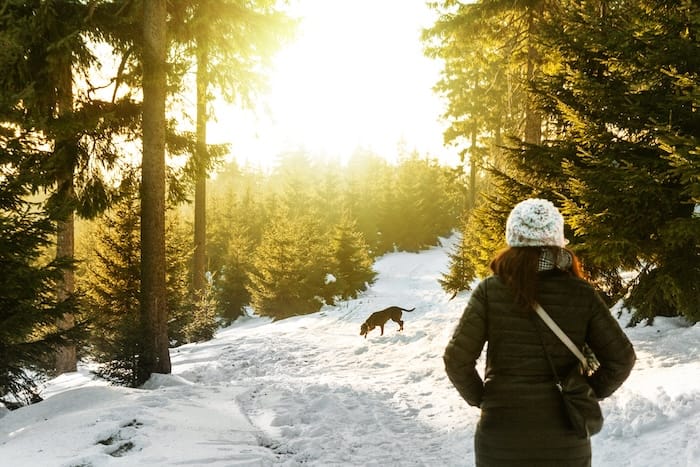As winter tightens its icy grip, dog owners embark on a chilly journey full of challenges and endearing moments. As most of the US worries about winter storms after the one that hit last year, you may stress about your pet’s well-being. But don’t worry because there are ways to keep it healthy and thriving as the chill hits.
You must follow some simple tips, from diet modifications to winter coat care techniques to best practices for avoiding icy paws. So grab a blanket, tether your curiosity, and come along as we reveal the thrilling guidelines all dog owners need to follow to turn this icy season into a canine paradise where canines rejoice.
We have a few tips dog owners can rely on to keep their pets warm and happy.

Adjust your dog’s diet
Your dog needs a proper diet in winter to be healthy. Dogs, like people during the winter, do well when they consume more calories to counter coldness. Consult a veterinarian about the best diet for your dog. Nutrient-dense foods such as lean proteins and healthy fats can provide the extra energy required to stay warm during the winter.
Nevertheless, moderation is essential to avoid weight gain. The idea of having a balanced diet is to ensure your pet is healthy and ready for the coming cold days ahead.
Provide a warm shelter
When dogs brave the winter cold without a warm haven, they feel the same. It is essential to provide a warm shelter, especially for outside dogs. If you want your dog to be safe from cold winds, put straw or blankets on its living area.
Ensure that your dog’s bed is not near drafts when it spends most of its time indoors. Pets, like humans, love curling up in warm places, making them feel safe during chilly evenings.
Protect paws
The grip of a cold winter hurts your dog’s paws. Due to rock salt and ice discomfort, paw pads may get dry and cracked. Consider buying booties that are safe for dogs to protect their soft feet. These accessories safeguard them against harmful substances and keep their feet warm when walking on slippery streets.
An alternative would be applying paw balm that acts like a barrier and soothes your pet’s paws. Wipe off their paws after outdoor outings to remove accumulated salts or chemicals for a clean and irritation-free walk during winter.

Schedule a winter check-up
Help your dog prepare for the season by taking it to the vet for a winter check-up. Some health conditions, such as arthritis, worsen in winter, so consulting an expert can help identify potential problems earlier.
In cold areas like Indianapolis where temperatures drop below freezing, regular checkups are mandatory. Look for a veterinarian in Indianapolis nearby to stay on top of appointments, no matter how cold it gets. Preventative care for your pet’s health marks the beginning of healthy and blissful winters.
Groom regularly
Although winter makes us imagine cute and fluffy dogs covered by snow, it is still essential to groom them. Brushing your dog often can help reduce tangles and loose fur that make a healthy coat. A well-groomed coat insulates better, contrary to what people think, thus allowing control of your dog’s body temperature.
It also reduces the fur between their paw pads, preventing snow or ice from building up. Remember, a neat and well-groomed coat for your pet during the cold season will boost its health and enhance its looks.
Ensure good hydration
The belief that in cold weather, you need to give dogs less water can lead to dehydration. Colder air carries less moisture during winter, while central heating systems cause dryness.
Ensure fresh water is constantly available so that it does not freeze; consider using a heated bowl if possible. Proper hydration promotes digestion and the uptake of nutrients necessary for winter resilience in your pet.
Limit outdoor exposure
Canines enjoy playing outside, but protecting them from the harsh winter is essential. Some breeds that are not used to such lower temperatures can end up getting frostbite or even hypothermia.
Therefore, you need to limit your canine pet’s outdoor activities and watch out for signs of discomfort, such as shivering or lifting his paws. Adjusting the length and intensity of exercise depending on the weather is an excellent way to keep your pet active without risking their health.
Conclusion
In conclusion, these dog care rules will be your toolkit to ensure your dog survives and thrives in the cold white weather. Remember that just a little extra effort can make this season an adventure full of tails wagging and sniffs of snow for your loving friend.
